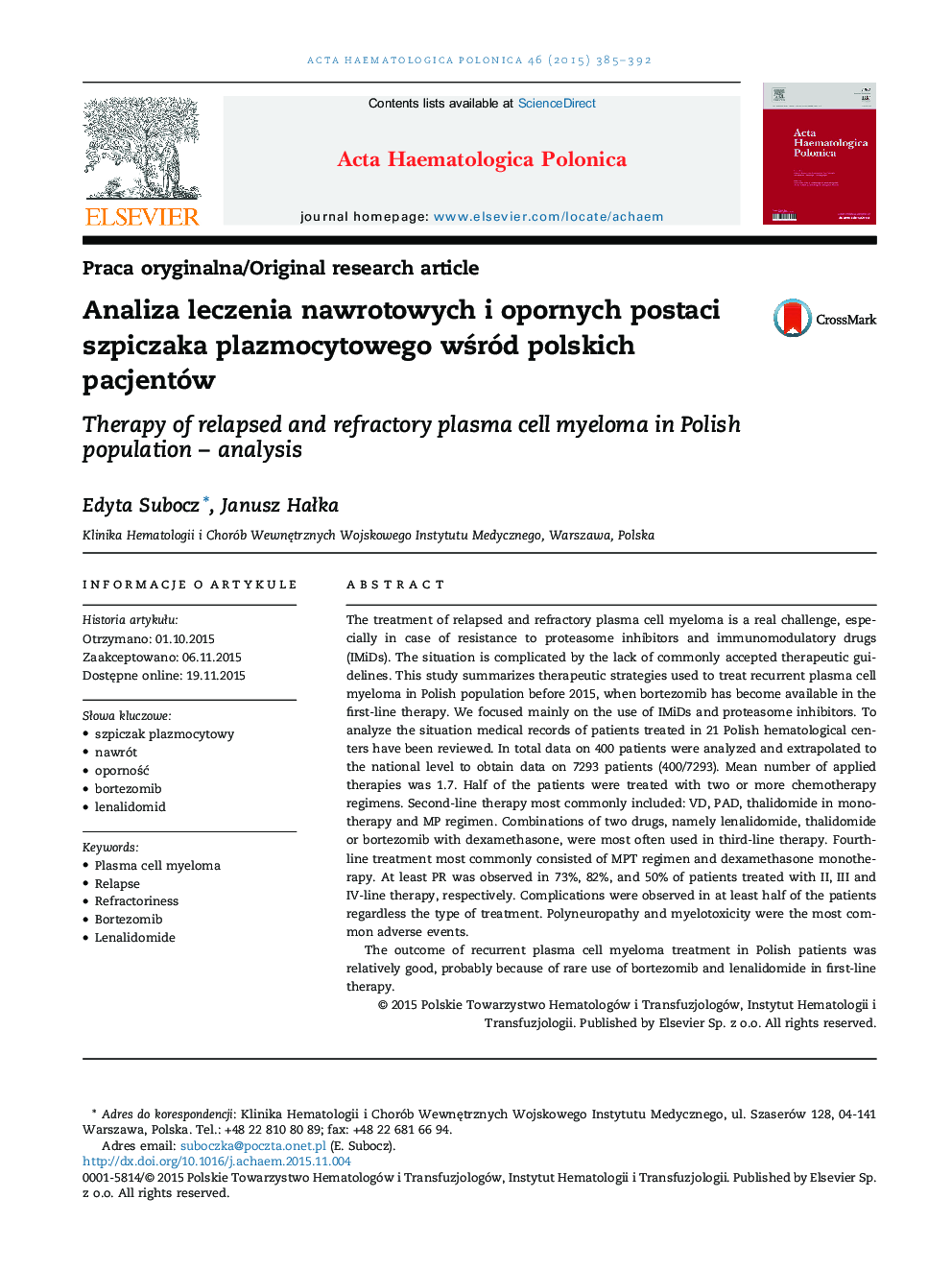| Article ID | Journal | Published Year | Pages | File Type |
|---|---|---|---|---|
| 3328081 | Acta Haematologica Polonica | 2015 | 8 Pages |
The treatment of relapsed and refractory plasma cell myeloma is a real challenge, especially in case of resistance to proteasome inhibitors and immunomodulatory drugs (IMiDs). The situation is complicated by the lack of commonly accepted therapeutic guidelines. This study summarizes therapeutic strategies used to treat recurrent plasma cell myeloma in Polish population before 2015, when bortezomib has become available in the first-line therapy. We focused mainly on the use of IMiDs and proteasome inhibitors. To analyze the situation medical records of patients treated in 21 Polish hematological centers have been reviewed. In total data on 400 patients were analyzed and extrapolated to the national level to obtain data on 7293 patients (400/7293). Mean number of applied therapies was 1.7. Half of the patients were treated with two or more chemotherapy regimens. Second-line therapy most commonly included: VD, PAD, thalidomide in monotherapy and MP regimen. Combinations of two drugs, namely lenalidomide, thalidomide or bortezomib with dexamethasone, were most often used in third-line therapy. Fourth-line treatment most commonly consisted of MPT regimen and dexamethasone monotherapy. At least PR was observed in 73%, 82%, and 50% of patients treated with II, III and IV-line therapy, respectively. Complications were observed in at least half of the patients regardless the type of treatment. Polyneuropathy and myelotoxicity were the most common adverse events.The outcome of recurrent plasma cell myeloma treatment in Polish patients was relatively good, probably because of rare use of bortezomib and lenalidomide in first-line therapy.
